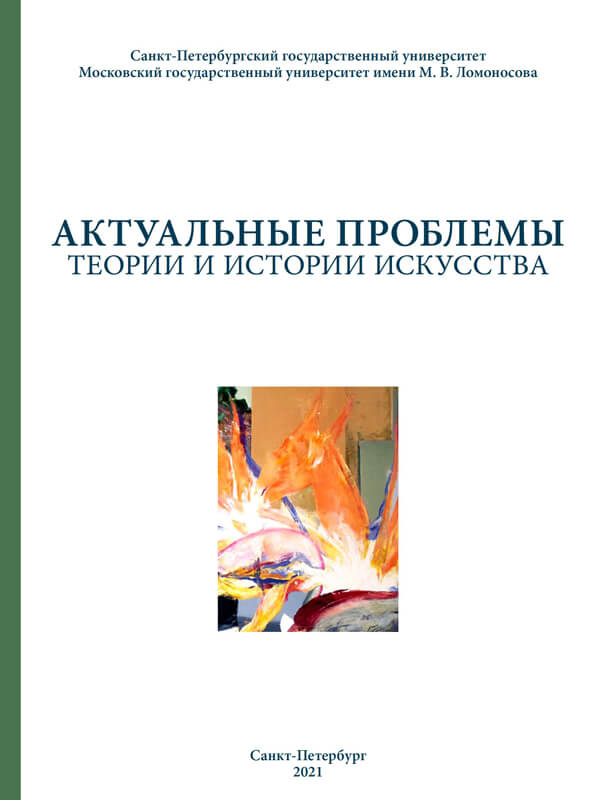When and Why Ancient Art Became Anonymous
DOI:
https://doi.org/10.18688/aa2111-01-01Keywords:
phantasia, Mimesis, artist, absolutistic monarchy, Severans, anonymity, pessimism, cultural declineAbstract
In this article, the problem of why ancient art became anonymous in late antiquity is discussed. There are aesthetic reasons: the visual arts are no longer thought to respond to the mimesis but to the ‘phantasia’, thus the images have a transcendent origin and are no longer attributed to specific artists. Moreover, the passage of the Roman Empire from a constitutional monarchy to an absolutistic one implies that monuments are now attributed especially to the imperial patronage, artists and architects are devaluated. The decline of classical culture, the widespread pessimistic feelings, and finally the disengagement of the western part of the Roman Empire from the classical Greek heritage complete this picture. However, ancient artists will become again renowned from the 9th and 10th century onwards.
The artists are mentioned and regarded important until Severan times. From this period onwards, the mentioning of artists becomes rare and disappears. This process is due to a radical change in the aesthetic theory (the phantasia becomes more important that the mimesis), to the transformation of the Roman Empire into an absolutistic monarchy, to the decline in classical education, finally to the establishment of a culture which sees works of art as the epiphanies of deities rather than the creations of artists.
References
Abbondanza L. Immagini della phantasia. Roemische Mitteilungen, vol. 108, 2001, pp. 111–134 (in Italian).
Albertson F. C. Zenodorus’s Colossus of Nero. Memoirs of the American Academy at Rome, vol. 46, 2001, pp. 95–118.
Anguissola A. Remembering with Greek Masterpieces: Observations on Memory and Roman Copies. Galinsky K. (ed.). Memoria Romana: Memory in Rome and Rome in Memory. Ann Arbor, University of Michigan Press Publ., 2014, pp. 117–134.
Bovey M. Disciplinae cyclicae: l’organisation du savoir dans l’oeuvre de Martianus Capella. Trieste, Edizioni Università di Trieste Publ., 2003. 406 p. (in French).
Calcani G. (ed.). Apollodoro e la colonna traiana. Rome, L’Erma di Bretschneider Publ., 2003. 67 p. (in Italian).
Can B. Antoninler dönemi baroğu ışığında Aspendos tiyatrosu bezemeleri. Adalya, vol. 8, 2005, pp. 89–119 (in Turkish).
Capogrossi Colognesi L. Tassi Scandone E. La Lex de Imperio Vespasiani e la Roma dei Flavii. Rome, L’Erma di Bretschneider Publ., 2009. 388 p. (in Italian).
Chalupa A. How Did Roman Emperors Become Gods? Various Concepts of Imperial Apotheosis. Anodos, no. 6/7, 2007–2008, pp. 201–207.
Coarelli F. Hermodoros di Salamina. Rogge S. (ed.). Salamis of Cyprus. Münster, Waxmann Publ., 2019, pp. 545–568.
Corso A. Prassitele. Fonti epigrafiche e letterarie, vol. 3. Rome, Leonardo Arte Publ., 1992 (in Italian).
Elsner I.; Rutherford I. (eds.). Pilgrimage in Graeco-Roman & Early Christian Antiquity: Seeing the Gods. Oxford, Oxford University Press Publ., 2005. 513 p.
Farinella V. The Domus Aurea. Milan, Electa Publ., 2019. 308 p.
Ghedini F. (ed.). Le Immagini di Filostrato Minore. Rome, Edizioni Quasar Publ., 2004. 207 p. (in Italian).
Janik J. Libanius and the Death of Julian. Classica Cracoviensia, iss. 21, 2018, pp. 83–94.
Johne K.-P. et al. (eds.). Die Zeit der Soldatenkaiser, 2 vols. Berlin, Akademie Verlag Publ., 2008. (in German).
Kansteiner S. (ed.). Der Neue Overbeck, 5 vols. Berlin, De Gruyter Publ., 2014. (in German).
Kulikowski M. The Triumph of Empire. Cambridge, 2016. 360 p.
La Rocca E. Sulla bottega di Pasiteles e di Stephanos. Greco G. (ed.). Kithon Lydios. Naples, Naus Editoria Publ., 2017, pp. 875–895 (in Italian).
Laes C.; Vuolanto V. (eds.). Children and Everyday Life in the Roman and Late Antique World. London, Routledge Publ., 2017. 390 p.
Ling R. Studius and the Beginnings of Roman Landscape Painting. The Journal of Roman Studies, iss. 67, 1977, pp. 1–16.
Lippold G. Timomachos. Paulys Realencyclopädie der classischen Altertumswissenschaft, vol. VI A, 1, 1936 (Thesauros–Timomachos), pp. 1292–1296 (in German).
Mann A. Aachens Geschichte und die Geschichten von “Odo von Metz” und dem Karlsthron, von “Aquae Granni” und dem “Grashaus” neben anderen lokalhistorischen Legendenbeiträgen. Aachener Kunstblätter, iss. 61, 1995/97, 1998, pp. 361–369 (in German).
Meyboom P. G. P. Famulus and the Painters’ Workshops of the Domus Aurea. Mededelingen van het Nederlands Instituut te Rome, iss. 54, 1995, pp. 229–244.
Meyer H. Doch Prometheus? Zum Typus des Torso von Belvedere und seiner antiken Wirkungsgeschichte. Boreas, iss. 30/31, 2007–2008, pp. 25–39 (in German).
Muth S. (ed.). Laokoon. Rahden, Marie Leidorf Publ., 2017. 502 p.
Pucci G. La “Pinacoteca”. Palermo, Aesthetica Publ., 2010. 127 p. (in Italian).
Schuler W. Vitruv im Mittelalter. Wien Köln Weimar, Böhlau Verlag Publ., 1999. 494 p. (in German).
Sojc N. (ed.). Domus Augustana. Leiden, Sidestone Press Publ., 2012. 275 p. (in German).
Stewart A. Hellenistic Free–Standing Sculpture from the Athenian Agora 1. Hesperia, iss. 81, 2012, pp. 267–342.
Watts E. J. City and School in Late Antique Athens and Alexandria. Berkeley, University of California Press Publ., 2008. 288 p.


